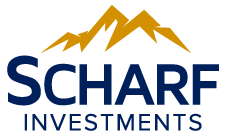How Safe is ETF Investing?

Exactly how safe is ETF investing? And is it a good long-term investment strategy?
Since their introduction in the early 1990s, Exchange Traded Funds (“ETFs”) have gained considerable traction with investors. Offering low fees and an easy way to diversify, ETFs can be a great way to get exposure to just about any corner of the world’s various capital markets. Unlike open-ended mutual funds that are priced just once a day, ETFs trade like stocks with prices that are updated throughout the day. In addition, the structure of ETFs makes them more tax-efficient than their mutual fund counterparts. Despite these positive characteristics, like all investment vehicles, ETFs do not come without risks.
One of the biggest issues with ETFs is that they offer no downside protection. Unlike traditional actively managed mutual funds, ETFs are passive investments that are constructed with the goal of tracking the return of a benchmark index. For instance, investors who purchase the S&P 500 SPDR ETF (SPY) can expect to see their ETF investment move in lock-step fashion with the S&P 500 index. While this allows investors to participate in nearly all of the upside of the underlying index, it also exposes them to all of the downside, in addition to paying an expense for it. During down markets such as 2018 when the S&P 500 was down -4.4% for the year, the SPY ETF was down -4.45% over the same period.
Currently in the midst of the longest bull market on record, we believe many passive ETF investors are forgetting the tough lessons learned after the great financial crisis. While ETF investing has been a good strategy for generating strong returns over the last decade, those returns have come with relatively little volatility. The market has had some minor disruptions but has generally risen year-over-year over this period. Do we think that this is likely to continue? While it’s impossible to predict exactly when the next downturn will come, current market valuations and declining corporate earnings growth would point to lower return expectations going forward. At this stage of the market cycle, we believe the chances of increased volatility and market downside are now higher than they’ve been over recent years. Because of this, we believe it is imperative to protect your capital and consider moving from a passive ETF buy-and-hold approach to an actively managed strategy that places a strong emphasis on risk management. Please reach out to us to learn more about Scharf’s comprehensive wealth management approach that aims to deliver long-term portfolio growth, downside protection, and lifelong financial guidance.
